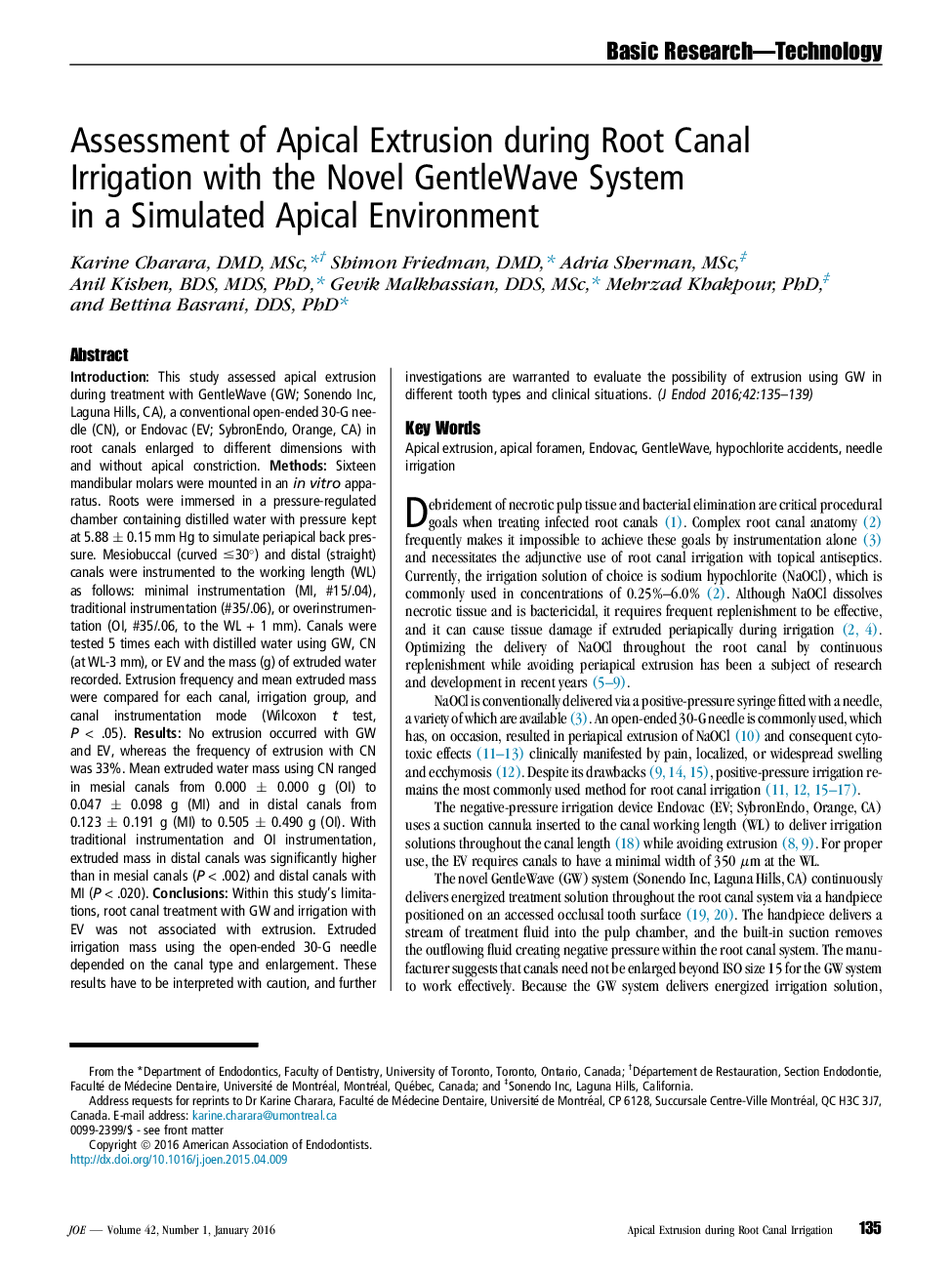| کد مقاله | کد نشریه | سال انتشار | مقاله انگلیسی | نسخه تمام متن |
|---|---|---|---|---|
| 3150149 | 1197497 | 2016 | 5 صفحه PDF | دانلود رایگان |

• The apical extrusion of GentleWave, a conventional open-ended 30-G needle, or Endovac was studied with an apparatus with an apical pressure threshold of 5.88 ± 0.15 mm Hg.
• GentleWave and Endovac did not cause treatment fluid apical extrusion.
• Occasional apical extrusion with a 30-G conventional open-ended needle was noted and associated with the canal size.
IntroductionThis study assessed apical extrusion during treatment with GentleWave (GW; Sonendo Inc, Laguna Hills, CA), a conventional open-ended 30-G needle (CN), or Endovac (EV; SybronEndo, Orange, CA) in root canals enlarged to different dimensions with and without apical constriction.MethodsSixteen mandibular molars were mounted in an in vitro apparatus. Roots were immersed in a pressure-regulated chamber containing distilled water with pressure kept at 5.88 ± 0.15 mm Hg to simulate periapical back pressure. Mesiobuccal (curved ≤30°) and distal (straight) canals were instrumented to the working length (WL) as follows: minimal instrumentation (MI, #15/.04), traditional instrumentation (#35/.06), or overinstrumentation (OI, #35/.06, to the WL + 1 mm). Canals were tested 5 times each with distilled water using GW, CN (at WL-3 mm), or EV and the mass (g) of extruded water recorded. Extrusion frequency and mean extruded mass were compared for each canal, irrigation group, and canal instrumentation mode (Wilcoxon t test, P < .05).ResultsNo extrusion occurred with GW and EV, whereas the frequency of extrusion with CN was 33%. Mean extruded water mass using CN ranged in mesial canals from 0.000 ± 0.000 g (OI) to 0.047 ± 0.098 g (MI) and in distal canals from 0.123 ± 0.191 g (MI) to 0.505 ± 0.490 g (OI). With traditional instrumentation and OI instrumentation, extruded mass in distal canals was significantly higher than in mesial canals (P < .002) and distal canals with MI (P < .020).ConclusionsWithin this study's limitations, root canal treatment with GW and irrigation with EV was not associated with extrusion. Extruded irrigation mass using the open-ended 30-G needle depended on the canal type and enlargement. These results have to be interpreted with caution, and further investigations are warranted to evaluate the possibility of extrusion using GW in different tooth types and clinical situations.
Journal: Journal of Endodontics - Volume 42, Issue 1, January 2016, Pages 135–139